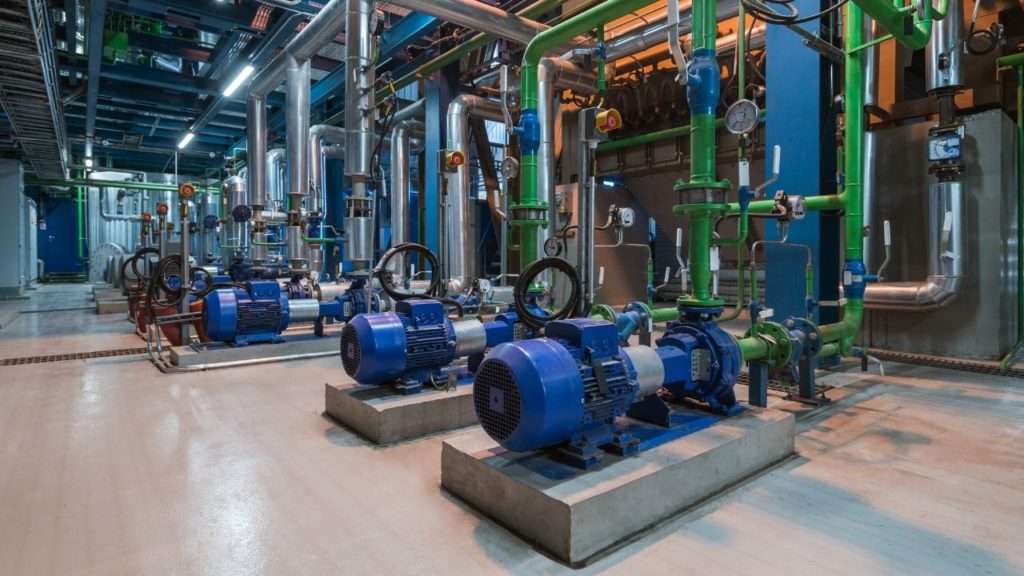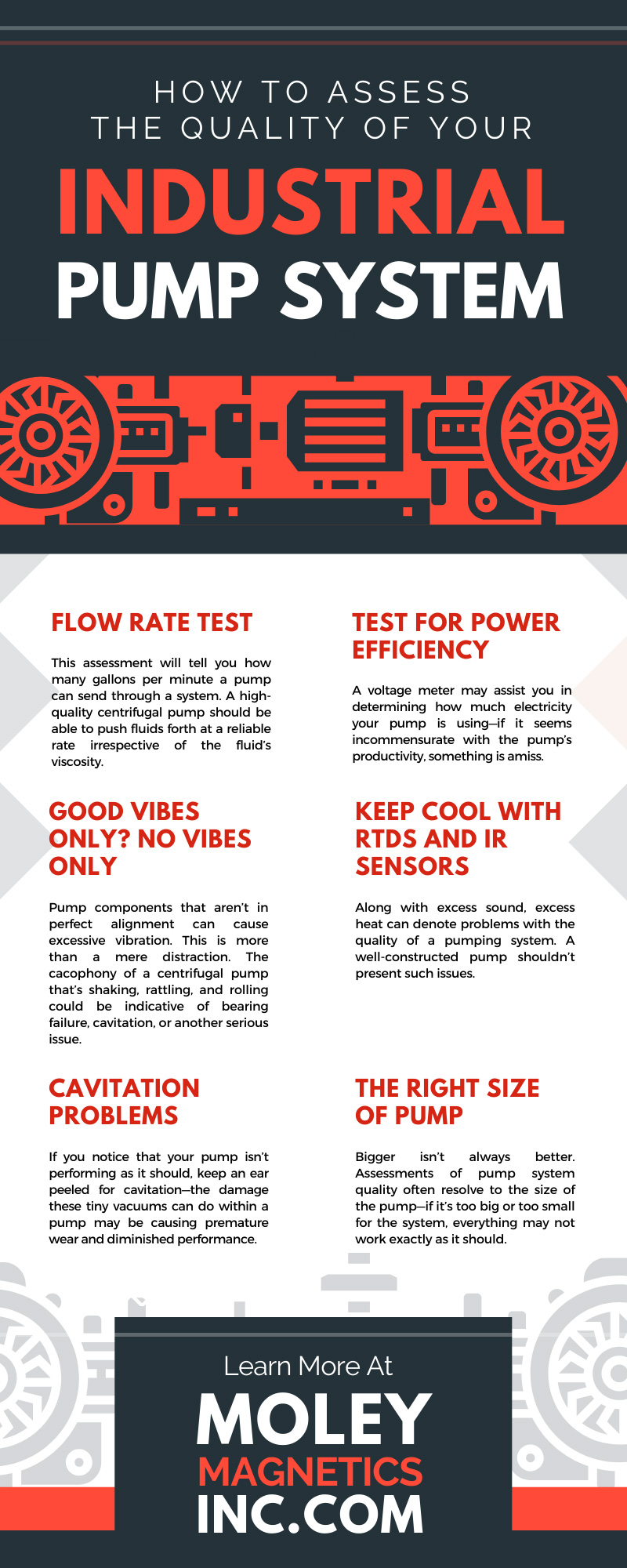
How To Assess the Quality of Your Industrial Pump System
When fluids are on the move within a process piping system, it’s thanks to an industrial pump—typically a centrifugal pump. When those fluids aren’t moving as they should be, or when you notice something is wrong with your system, it’s time to take a closer look.
Whether you’ve commissioned your extant piping system or simply inherited it, it may be time to do a quality check to determine what the issue is. You may be dealing with excessive wear and tear, bearing failure, a poor choice of pump, or damage from bubbles that aren’t as harmless as you’d expect. Here’s how to assess the quality of your industrial pump system.
Flow Rate Test
Whether you’re installing a new pumping system or updating an existing one, measuring its flow rate is one of the most important assessments you can make. If you’re working with viscous fluids such as petroleum or slurry, you need to know your pump is up to the task. A standard flow rate test is the way to accomplish this. This assessment will tell you how many gallons per minute a pump can send through a system. A high-quality centrifugal pump should be able to push fluids forth at a reliable rate irrespective of the fluid’s viscosity. If a flow rate test yields that a pump’s gallons per minute diminishes significantly with increased viscosity, it can call the integrity of the entire pumping system into question.
Test for Power Efficiency
Just as pumps rely on motors to propel fluid, motors rely on a power source to get turning. For many motors, that means an electric current. Others use fossil fuels. Either way, do your motor and pump get the most out of that power supply? A voltage meter may assist you in determining how much electricity your pump is using—if it seems incommensurate with the pump’s productivity, something is amiss. Similarly, a fuel flow meter can tell you how much fuel your pump is using and whether it’s too much.
Good Vibes Only? No Vibes Only
Pump components that aren’t in perfect alignment can cause excessive vibration. This is more than a mere distraction. The cacophony of a centrifugal pump that’s shaking, rattling, and rolling could be indicative of bearing failure, cavitation, or another serious issue. Luckily, every vibration frequency carries a message of its own. If you hear a high pitch, it could mean a very small but very pressurized leak. It may also be a sign of cavitation, which can be a disastrous condition when working with pressurized fluids. Lower frequencies, however, could indicate something is causing turbulence within the pump. For example, turbulence could be caused by an issue with the pump’s shaft. An accelerometer may help you identify the existence of unwanted vibration in a centrifugal pump as well as the nature of the problem.
Keep Cool With RTDs and IR Sensors
Along with excess sound, excess heat can denote problems with the quality of a pumping system. A well-constructed pump shouldn’t present such issues. If the components of a pump are reaching unusually high temperatures, this is a good sign something is awry. While it may be humorous to imagine a centrifugal pump with an old-fashioned mercury thermometer as you determine whether it’s ailing, you’ll need more sophisticated sensors. A resistance temperature detector (RTD) is your best bet for determining pump temperate readings. An infrared sensor also can determine the temperature of a pump component and alert you as to whether or not the temperature is beyond an acceptable range.
Cavitation Problems
Let’s talk more about cavitation. It has nothing to do with teeth. Instead, it describes a phenomenon in which the liquid in a pump becomes a vapor while at low pressure. This is an unusual and undesirable situation, for it should require high pressure for a liquid to vaporize. When the pump’s suction head delivers insufficient pressure, air bubbles occur in the liquid. These air bubbles don’t simply make their way through a system—they collapse with great force, which can damage sensitive components in pumps. As these bubbles pop, they make a signature sound your accelerometer or an acoustic microphone can detect. If you notice that your pump isn’t performing as it should, keep an ear peeled for cavitation—the damage these tiny vacuums can do within a pump may be causing premature wear and diminished performance.
The Right Size of Pump
Bigger isn’t always better. Assessments of pump system quality often resolve to the size of the pump—if it’s too big or too small for the system, everything may not work exactly as it should. Many engineers try to overshoot a system by designing it to take on a pump that’s too large and too powerful for it. The intent is that gradual wear and tear will eventually bring the pump’s performance down to acceptable parameters, saving clients from such wear taking a system out of commission. However, this is often a classic case of engineers being too clever by half. In the meantime, an oversized pump operates inefficiently, using too much power and overdriving fluid through systems. Check the size of your pump. If it’s too big for its system and seems to be adversely affective your facility’s performance, you may want to replace it with one that’s the right size. Look for models that resist corrosion and erosion over time. There’s no need to break it in.
Strengthen Your Pump with a Peerless-Moley Connection
These are just a few ways to assess the quality of your industrial pump system. If you’re looking for the best industrial pumps, ones whose quality you can trust, look no further than Moley Magnetics. We’re a proud partner of Peerless Pumps, distributing vertical and horizontal industrial pumps throughout Upstate and Western New York. As one of the Northeast’s leading Peerless Pump distributors, Moley Magnetics assists manufacturers, municipalities, agricultural operations, and other users of pumps and process piping. Clients can make the most of their systems by equipping them with this top-notch equipment—pumps that are, indeed, without peer.


